CollectA has long been at the forefront of producing obscure toys of prehistoric animals but by and large they’ve all been tetrapods; four legged vertebrates and their descendants. This includes a variety of dinosaurs, pterosaurs, marine reptiles, and mammals. But this year CollectA has raised the bar and released four prehistoric invertebrate figures: a trilobite (Redlichia rex), Orthoceras, Pleuroceras ammonite, and a belemnite. For their extant line they even produced a nautilus and a horseshoe crab. And in 2021 we can also expect a Pravitoceras ammonite from them as well. It goes without saying that models of these animals are rarely made so for prehistoric invertebrate aficionados this has been an exciting year. These CollectA releases bring the retired Bullyland invertebrates to mind and one could say that these are spiritual successors to those now hard-to-find figures. Today we’re looking at the belemnite and in my next review I’ll be covering the ammonite.
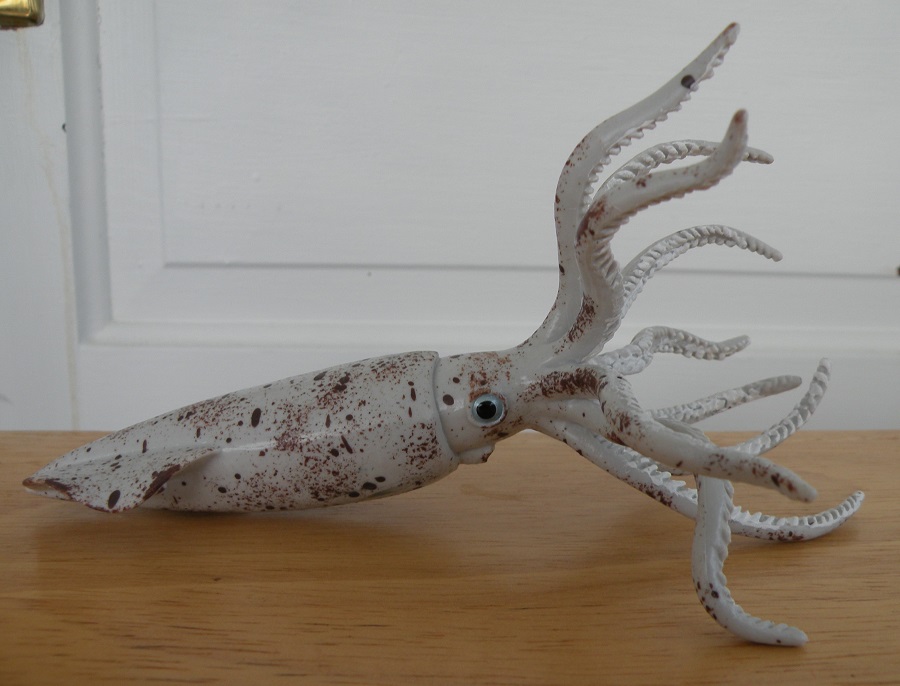
Superficially belemnites look like extant squids and cuttlefish but they’re considerably different in many key ways. Externally the most notable difference between them is that belemnites possess 10 arms and no tentacles whereas squids and cuttlefish possess 8 arms and 2 tentacles. Belemnite arms lacked suckers but did have hooks, which are faithfully reproduced here.

Before we go on, I must admit to having needed a crash course on cephalopod anatomy in writing this review, so if anything is amiss feel free to comment below. What makes belemnites significantly different from their living relatives is the hard, internal rostrum made of calcite at the animal’s rear end. Forward of that was the phragmocone and proostracum which were made of aragonite. Cuttlefish posses an aragonite structure too, known as a cuttlebone, which aids in buoyancy. Squids have an internal structure known as a gladius (also called the pen) that is made of chitin and is a vestige of the external shell that their ancestors possessed. Nether squid nor cuttlefish have the calcite rostrum that belemnites had.
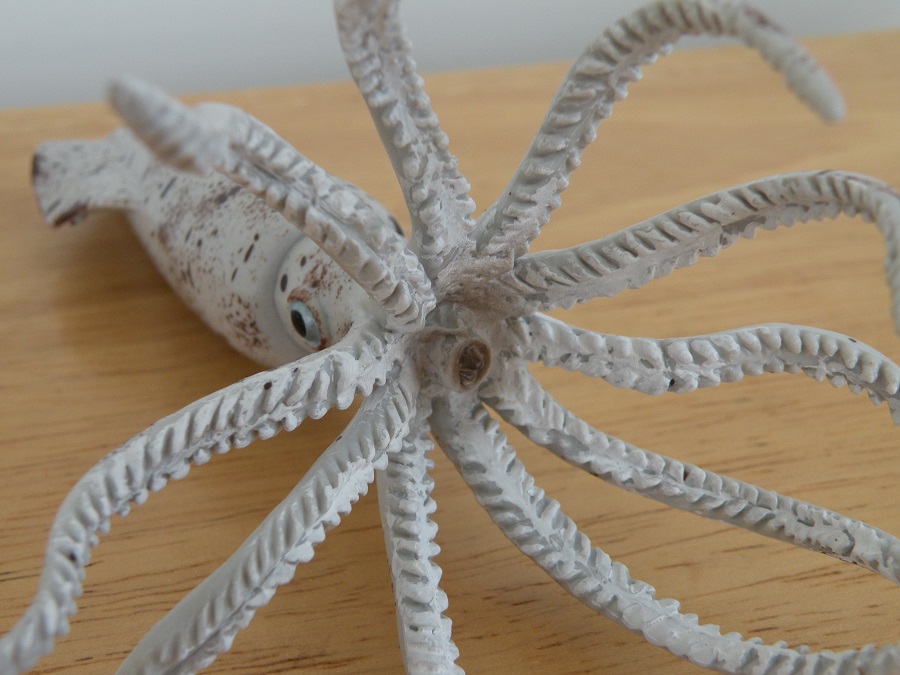
The name belemnite means “dart” or “arrow” in Greek, in reference the shape of the rostrum fossils. It is this calcite rostrum that is frequently preserved in the fossil record while the animal’s soft anatomy is only rarely preserved. Like a cuttlefish’s cuttlebone, the rostrum, also called a “guard” or “cigar” would have aided in buoyancy and stability. Much like ammonite shells, belemnite rostrums are commonly found and easy to obtain. The belemnite species Belemnitella americana is the state fossil of Delaware which is a point of pride for me personally, living only minutes away from the Delaware boarder.
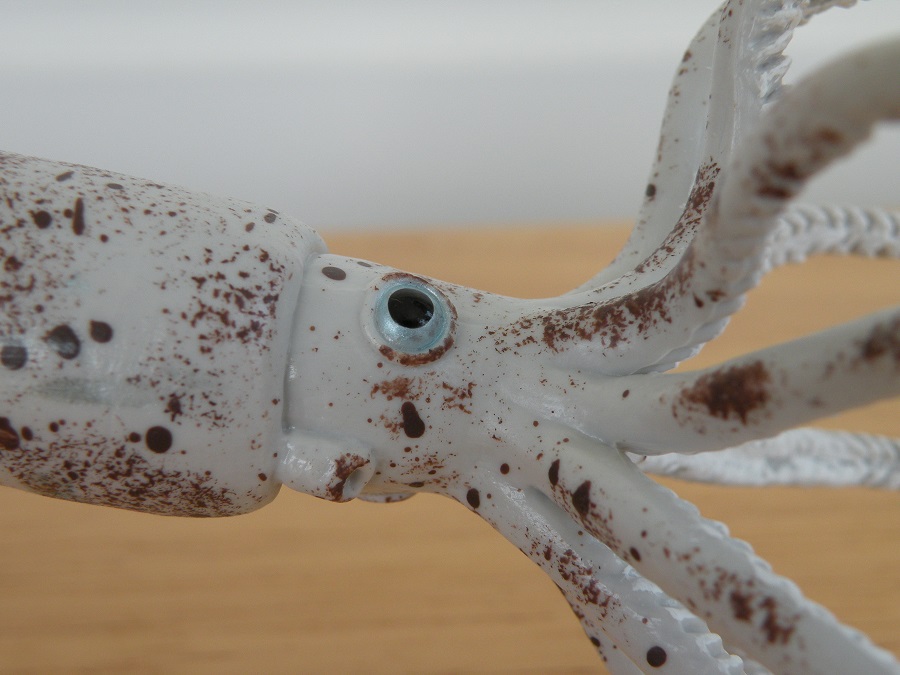
What exact species the CollectA belemnite is, I’m not sure. I don’t think it is supposed to represent any species in particular. That said, its overall design and posture remind me of the fossilized remains of the Jurassic genus Passaloteuthis and given the exceptional preservation of that genus it may have been a reference point. Belemnoids lived from the Devonian up to the end of the Cretaceous and then died off during the K-Pg extinction event.

The CollectA belemnite measures approximately 6” in length. The arms are splayed out in such a way that the weight of the figure can be supported by them if you want to display it that way, although it does tilt to one side and might eventually fall over. Alternatively, you can display it horizontally and that works well too.
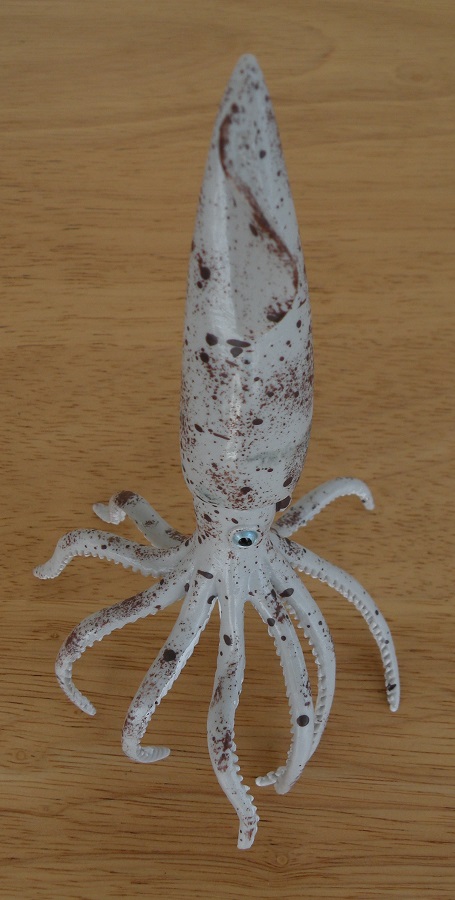
The figure has a somewhat unusual coloration and pattern, being white with brown splotches and speckling. Although not identical to it the paintjob is reminiscent of the Bullyland belemnite and I have to wonder if that was an intentional choice. The toothy inside of the arms is an even brighter shade of white and the paint application looks thick and sloppy here. At the center of the 10 arms is the beak which is painted brown. The eyes are baby blue colored with black pupils.
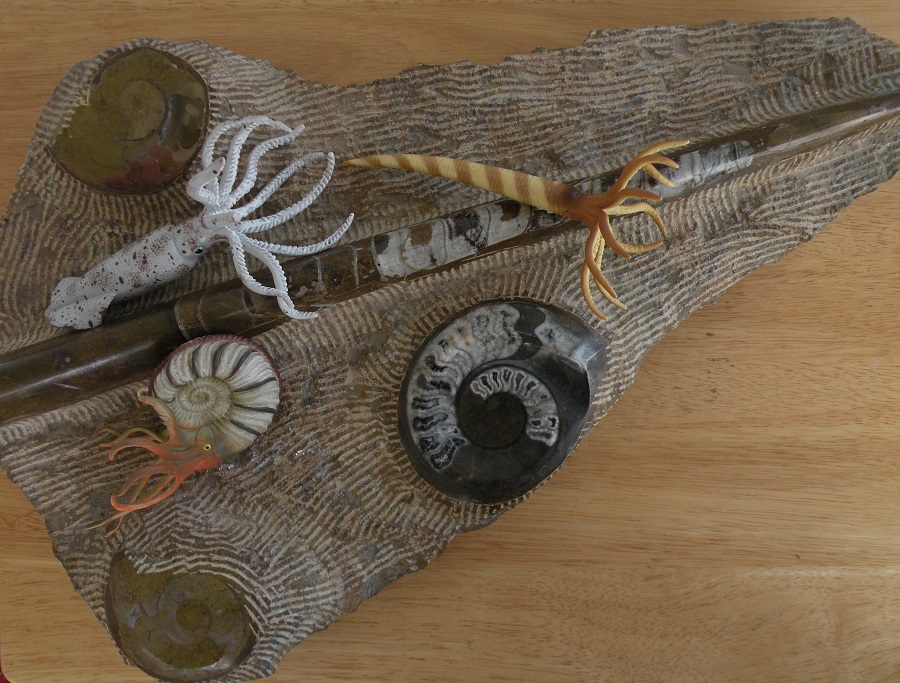
Anatomically there is little to mess up with an indeterminate species of belemnite. At the rear we have the wings and mantle, past the mantle’s collar are the eyes and siphon, and then the arms and beak. You might be underwhelmed by the figure, because it looks like any old squid to the untrained eye. But it’s not a squid, it just looks like one, and that’s just what you want from your belemnite figure.
As happy as I am to have a toy belemnite I do fear that it has gone largely unnoticed in our hobby. I wouldn’t be surprised if it turns out to be a poor seller. CollectA took a risk by producing this toy, many collectors have no doubt foregone acquiring it in favor of the more alluring dinosaurs and other prehistoric critters. Even ammonites and Orthoceras at least have unique anatomy that makes them immediately distinguishable from their modern relatives, and thus more appealing. I’m a proponent of voting with your wallet and the only way we’ll continue to see unique and obscure animals mass produced in plastic is if we buy the ones that already exist. I wouldn’t be surprised if CollectA threw in the towel on prehistoric invertebrates and I sincerely do not want that to happen. The CollectA belemnite is a splendid figure that serves well in fleshing out a diverse collection that displays the biodiversity present in the past. Don’t pass this one up.
Disclaimer: links to Ebay and Amazon on the DinoToyBlog are affiliate links, so we make a small commission if you use them. Thanks for supporting us!



Sincerely Collecta has made this year a magnificent set of prehistoric marine marine invertebrates, some fortunately existing today such as the horseshoe crab and the nautilus. The belemnite is very beautiful and I wish it were a much larger size than it is today, for my part unfortunately due to the coronavirus they have not yet received it in my Store.
Merry Christmas and may everyone be as happy as I am.
Wonderful; just wish it was half the size 🙂
This is a great figure that I think got overshadowed by the others due to its resemblance to squid. I really love the blue eyes on the figure. Great review and hopefully CollectA will continue to give as at least one invertebrate a year, just like the mammals.
Good review. And CollectA is giving us a fourth prehistoric cephalopod next year, so I’m guessing these ones sold reasonably well.
I feel like production for the Pravitoceras was probably underway long before they got feedback for the sale of this year’s releases. But maybe you’re right, I hope you are.
Great review and I wholeheartedly agree that folks don’t miss their chance to get this while they can, and show that organisms like these are interesting and worth taking the risk for, if they have the slightest interest in anything that isn’t a dinosaur, or mammal. I spent a lot of this year getting my hands on the retired Bullyland prehistoric invertebrate models, so if/when the chance arises for me, I hope to get my hands on all of these.
Well, I learned a couple of things, so I’d say the crash course served you well. I definitely snapped this one up as soon as it was available–I want CollectA to get the idea that invertebrates are worth their effort!